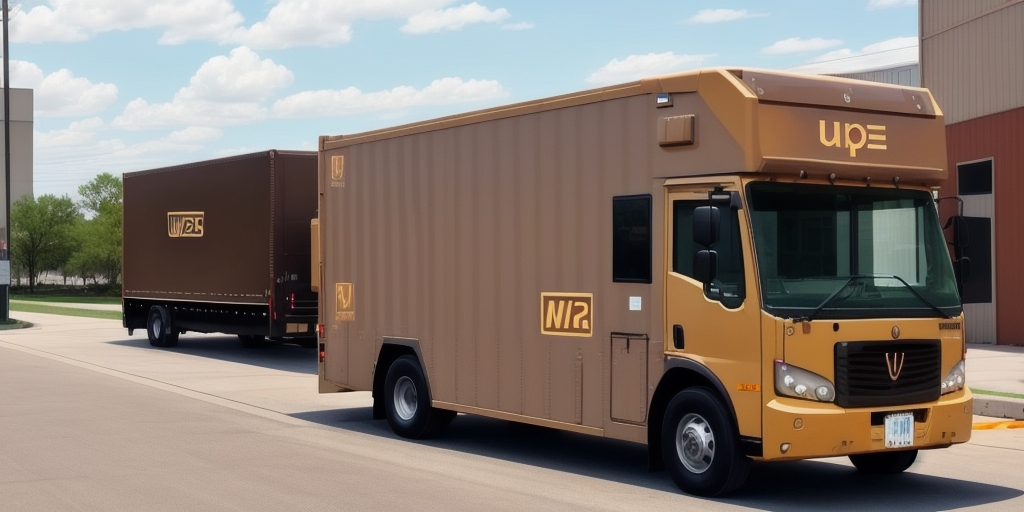Understanding the UPS Weight Limit: Comprehensive Guide
When shipping packages, the weight of your shipment is a critical factor that influences cost, delivery time, and overall shipping efficiency. UPS, one of the leading shipping carriers globally, enforces specific weight limits to ensure the safe and timely delivery of packages. In this comprehensive guide, we’ll delve into the UPS weight limit policies, their implications for your shipping needs, and strategies to navigate these guidelines effectively.
Why Knowing UPS Weight Limits is Essential
Understanding UPS weight limits is crucial for several reasons:
- Cost Management: Exceeding weight limits can result in additional fees, increasing your shipping costs.
- Delivery Efficiency: Heavier packages may require more time to process and deliver, potentially delaying your shipment.
- Packaging Optimization: Knowing weight restrictions helps in selecting appropriate packaging materials, ensuring your items are secure during transit.
For instance, shipping a package that exceeds UPS's weight limits for a particular service can convert a standard delivery into a freight shipment, which is often more expensive and has longer delivery times.[1]
How UPS Determines Weight Limits
UPS sets weight limits based on several factors, including:
- Service Level: Different UPS services have varying weight restrictions. For example, UPS Ground typically allows packages up to 150 pounds, whereas UPS Air Cargo can accommodate much heavier shipments.
- Package Size: Larger packages might have lower weight limits to ensure they can be handled and transported safely.
- Destination: International shipments often have stricter weight and size restrictions due to varying country regulations.
Safety regulations also play a significant role, especially concerning air transportation, which imposes stricter weight limits to balance aircraft weight distribution and fuel efficiency.[2]
Types of UPS Weight Limits
Standard Weight Limits
For most UPS shipping services, the maximum weight for a standard package is 150 pounds.[3] This limit applies to both domestic and international shipments using services like UPS Ground and UPS Next Day Air.
Oversized and Overweight Shipments
UPS accommodates oversized and overweight shipments with specialized services. For example:
- UPS Freight: Handles shipments up to 4,400 pounds for palletized cargo.[4]
- UPS Air Cargo: Allows for heavier shipments that exceed standard weight limits but must adhere to specific dimensional constraints.
International Weight Limits
Weight limits for international shipments vary significantly depending on the destination country. It’s essential to consult UPS’s international shipping guidelines or contact a UPS representative to verify the permissible weight for your destination.[5]
Calculating the Weight of Your Package
Accurate weight calculation ensures your package complies with UPS guidelines, preventing unexpected fees and delivery delays. Follow these steps to determine your package's weight:
- Weigh the Item: Use a reliable scale to measure the item's weight accurately. Ensure the scale is calibrated to avoid discrepancies.
- Add Packaging Materials: Include the weight of the box, padding, and any other materials used to secure the item.
- Verify Against UPS Limits: Compare the total weight against UPS’s weight limits for your chosen service level.[6]
For example, if you are shipping via UPS Next Day Air, ensure that your package does not exceed the 150-pound limit. For international shipments, refer to specific limits based on the destination country.
Ensuring Compliance with UPS Weight Guidelines
To comply with UPS weight guidelines, consider the following strategies:
- Use Appropriate Packaging: Select a box size that fits your item snugly to avoid unnecessary weight from excess packaging materials.
- Optimize Packaging Materials: Utilize lightweight yet protective materials like bubble wrap or air pillows instead of heavier alternatives.
- Split Shipments: If possible, divide your shipment into smaller packages that each meet UPS’s weight limits.
Implementing these practices can help you stay within UPS’s weight restrictions and minimize additional costs.
Strategies to Avoid Additional Fees and Charges
Shipping overweight packages can lead to unexpected fees. To avoid these costs, consider the following strategies:
- Accurate Weighing: Always weigh your package after packing to ensure compliance with UPS weight limits.
- Choose the Right Service: Select a UPS service that aligns with your package’s weight and delivery requirements.
- Use Flat-Rate Shipping: For heavier items, UPS’s flat-rate services can be more cost-effective, as they charge based on box size rather than weight.[7]
- Negotiate Bulk Rates: If you frequently ship heavy packages, consider negotiating bulk shipping rates with UPS for better pricing.
Implementing these strategies can significantly reduce the risk of incurring additional fees due to overweight shipments.
Comparing UPS Weight Limits with Other Shipping Carriers
Understanding how UPS’s weight limits stack up against other carriers can help you make informed shipping decisions:
FedEx
FedEx’s Express services generally have a maximum weight limit of 150 pounds, similar to UPS. Their FedEx Freight service accommodates much heavier shipments, comparable to UPS Freight.[8]
USPS
The United States Postal Service (USPS) has a lower maximum weight limit, typically 70 pounds for Priority Mail and similar services.[9]
DHL
DHL primarily focuses on international shipments, with varying weight limits depending on the destination country and service level. Typically, their maximum weight per package is 70 kilograms (154 pounds).[10]
While UPS offers competitive weight limits for both domestic and international shipping, it’s essential to compare these limits and associated costs with other carriers to determine the best fit for your specific needs.
International Shipping Weight Limits with UPS
When shipping internationally, UPS enforces specific weight limits that vary by country and service level:
- Standard International Services: Typically adhere to the 150-pound limit but can vary based on destination country regulations.
- Freight and Specialized Services: Allow for shipments up to 4,400 pounds, depending on the destination and shipping method.
To ensure compliance:
- Check Destination Regulations: Research the weight and size restrictions of the destination country before shipping.
- Utilize UPS Tools: Use UPS’s online tools, such as their International Shipping Calculator, to determine applicable weight limits and fees.
Additionally, consider customs regulations and documentation requirements, as heavier shipments may be subject to more rigorous inspections or additional taxes and duties.[11]
What Happens if Your Package Exceeds the UPS Weight Limit?
Exceeding UPS's weight limits can lead to several consequences:
- Additional Fees: Overweight packages incur extra charges, which vary depending on how much the package exceeds the limit.
- Delayed Delivery: Processing an overweight package may take longer, delaying the overall delivery timeframe.
- Package Rejection: In cases where a package significantly exceeds weight limits, UPS may reject or return it to the sender.
To mitigate these issues, always accurately weigh and measure your packages before shipping and consider using UPS Freight services for heavier items.[12]
Conclusion
Understanding and adhering to UPS's weight limits is essential for ensuring efficient, cost-effective shipping. By accurately calculating your package’s weight, selecting the appropriate UPS service, and implementing strategies to stay within weight guidelines, you can prevent unnecessary fees and delivery delays. For international shipments, always verify destination-specific regulations to ensure compliance. By leveraging this knowledge, you can enhance your shipping experience, saving time and resources in the long run.








